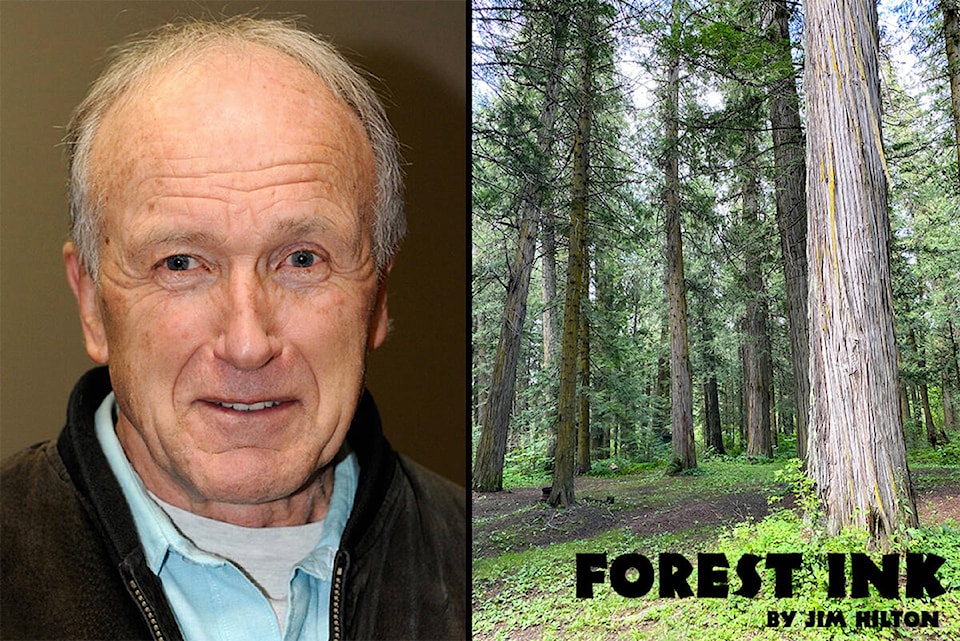I recently read a well illustrated book entitled “The Working Forests of BC - Project.”
The book, initiated by Gerry Birch, contains over 200 photos of reforested areas compared to photos of the areas logged decades in the past.
The book also contains graphs and explanations of the state of B.C.’s forests in seven regions of province since the 1990s.
While there have been some significant changes in our forests since the publication of the book, in particular the wild fires since 2010, it does note B.C. has productive working forest land that supports a vibrant timber industry.
While some of our denuded forest lands have been difficult to re-establish, it is small in comparison to many areas around the world as described in a new video from our local Library “The Age of Nature” narrated by Uma Thurman.
One of the discussions is by Thomas Crowther and his team from the Swiss Federal Institute of Technology in Zurich (ETH Zurich). He says the Earth could sustain another 1.2 trillion trees, which could absorb 200 gigatonnes of carbon.
This estimate is based on a combination of satellite images and ground data from contributors from around the world.
It is important to look for areas to plant trees that once contained forests and not in urban, grasslands or agriculture lands. Crowther and his team are also looking at nematodes and soil fungi that are important to carbon storage in soils.
The Nature series describes a number of disasters around the world including nuclear testing, civil wars, along with bad forestry and grazing practices causing the collapse of ecosystems, forcing thousands of people from their lands.
FOREST INK: Giant tree makes news
One example of poor forest practices is in the peat soils of Indonesia and Borneo. Human activities on peatlands involved man-made canals to make the land more suitable for agriculture and forestry. One of the worst examples was a mega rice project in the mid 1990s where one million hectares of peatland was converted to rice production. The area now suffers from extensive fires each year.
Many canals were also established to transport timber to processing points on rivers which also resulted in the drying of peatlands and serious fires. Locals are now establishing dams to control the water and return the peatlands to their original condition.
Another example of recovery was in Gorongosa National park in Mozambique, where starving soldiers and poachers in a 16-year civil war (1977 -1992) caused the disappearance of 90 per cent of large herbivores which negatively impacted the rest of the ecosystem.
It has taken 30 years to restore the biodiversity necessary for humans to be able to restore an ecosystem that can come close to supporting original numbers. Park rangers now patrol and protect the animals which are returning to their former numbers. Some female elephants have developed smaller and smaller tusks making them less desirable to poachers and more able to survive in the future.
While the Age of Nature series presents some vivid examples of our human failures it does present some hope for future generations where young people have been instrumental in the recovery of many poor choices of past generations. Natural systems have a great capacity to repair if we give them a chance.
Jim Hilton is a professional agrologist and forester who has lived and worked in the Cariboo Chilcotin for the past 40 years. Now retired, Hilton still volunteers his skills with local community forests organizations.
FOREST INK: Wildfire prevention in an American town
Do you have something to add to this story, or something else we should report on? Email: cassidy.dankochik@quesnelobserver.com
@GimliJetsMan
cassidy.dankochik@quesnelobserver.com
Like us on Facebook and follow us on Twitter.
